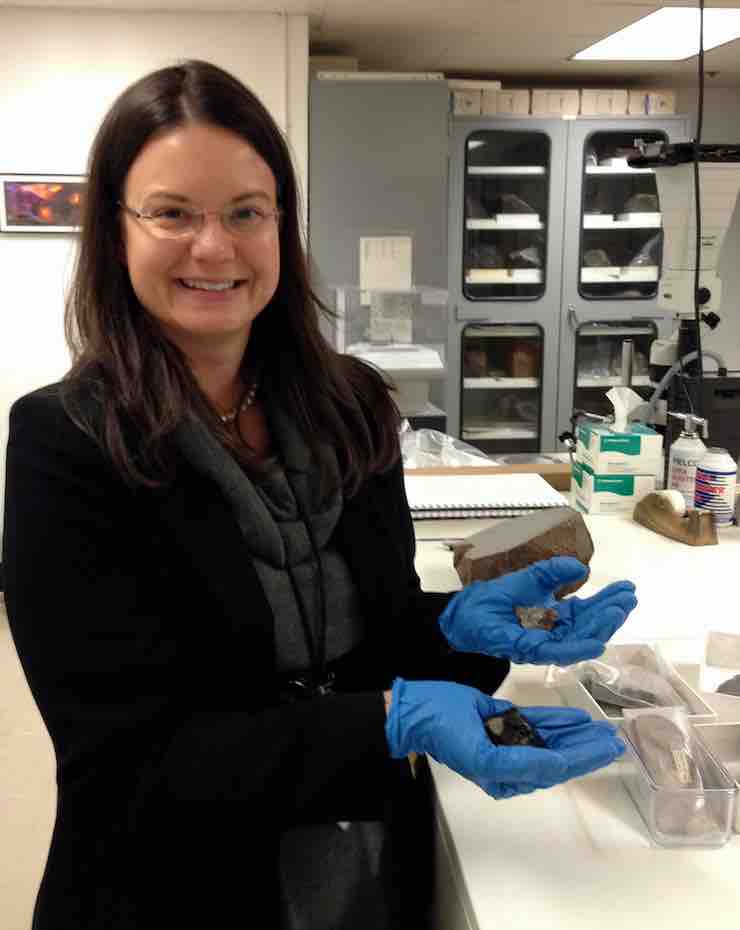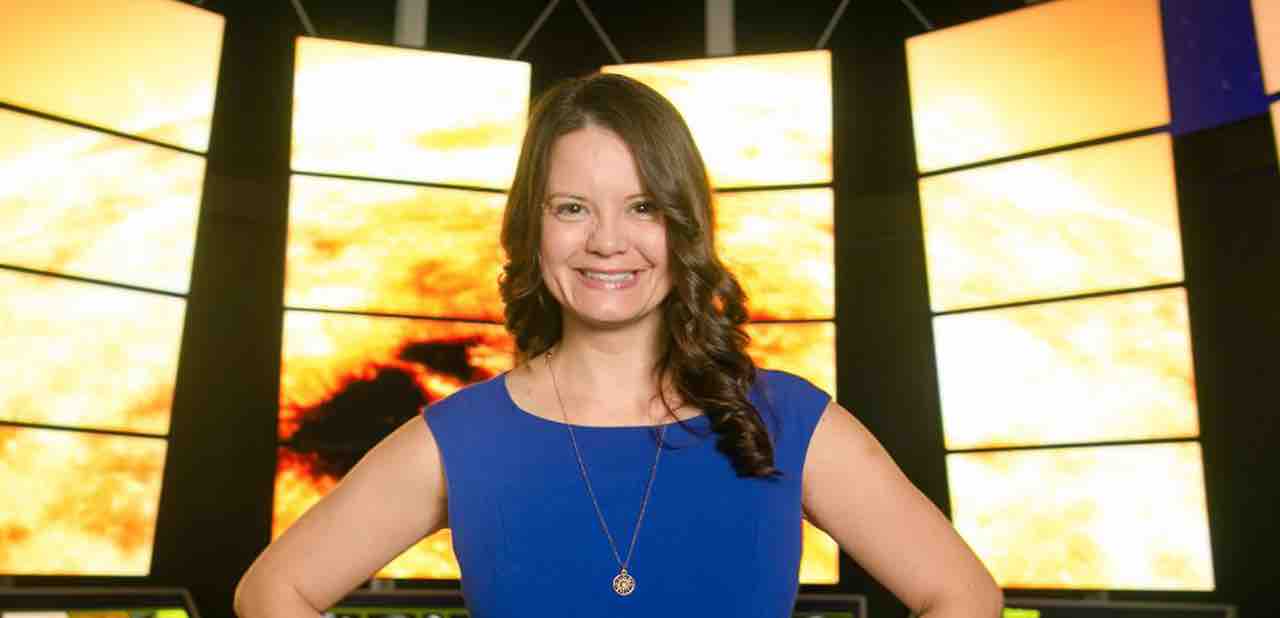Kelly Korreck, NASA scientist and astrophysicist, is chief of scientific operations and project manager of the suite of instruments “Solar Wind Electron Alpha and Proton” (SWEAP). The latter are important for studying the solar wind of the Sun, and they’re installed in NASA’s Parker Solar Probe (a mission to touch the Sun’s Corona).
Astrophysicist of the “Smithsonian Astrophysical Observatory” (based in Cambridge, USA), Korreck studies to understand the Sun, his activity and how to observe him, with the ultimate goal of learning to live with our closest Star. Kelly accepted to meet us and introduce us her world and her wonderful work.
What did you think when you realized that you would be the first to consult the solar atmosphere?
The feeling is incredible! It was the plan all along to measure the solar atmosphere although the predictions for when Parker Solar Probe would cross into the atmosphere were as late as the seventh year of our mission (2025). The crossing of the Alfven surface was a very big achievement.
The “NASA’s Parker Solar Probe” will be able to solve the biggest mystery of the Sun: why has the Solar Corona a temperature of 1 million degrees Celsius, while the surface has only a few thousand degrees?
We are still working on the question why is the corona so hot? The data we got back during this first trip inside the Corona indicated that the switchbacks play a role but we need more data to really explore this question.
What is the most important thing that “NASA’s Parker Solar Probe”, which you did not know before, has learned?
We have had many new lessons. We have explored a new region so have seen things like comets and have observed the planet Venus which wasn’t one of the original goals of Parker Solar Probe but a bonus science observation! We were able to sample coronal mass ejections closer to the sun before they travel through the interplanetary space towards Earth. We did not know how common magnetic switchbacks were and how they play a role in heating the solar wind. It has been very exciting few years and many more scientific papers are underway.
Europe has also sent its Probe to the Sun: the “ESA’s Solar Orbiter”. Could the European Probe help Parker Solar Probe discover something new?
NASA’s Parker Solar Probe and ESA’s Solar Orbiter are great collaborators. Each has important work to do and together these spacecrafts both get a different view of the sun so they do amazing science alone and with data from the other spacecraft.
Why is it so important to increase knowledge of space weather? Just to know in advance when the Earth will be hit by the solar wind?
Space weather is a very important topic to our technologically based society and as we humans live and work in space. Being able to predict a space weather event hitting the earth is important so we can prevent damage to spacecraft, harm to astronauts or even the electrical power grid here on Earth! NASA’s Parker Solar Probe contributes to understanding space weather in concert with the other satellites in NASA’s Heliophysics System Observatory.
Have NASA engineers succeeded in making all your dreams come true? Or is there a dream that today’s technology cannot achieve?
NASA Engineers and all the engineers who worked on Parker Solar Probe and other space missions are amazing! They make things that look impossible a reality by working together as a team. They remind me of a quote from Dr. Robert Goddard: “It is difficult to say what is impossible, for the dream of yesterday is the hope of today and the reality of tomorrow”

On Earth, as on any other planet, everything changes (such as climate change). How has our Star, the Sun, changed in recent decades? Did you notice any unexpected changes?
The Sun goes through an 11-year cycle. The cycle is from low activity to high activity and then back to low activity. There are three pieces to the activity of the sun that I am referring to, these are flares, coronal mass ejections, and energetic particles. Solar flares are large magnetic explosions on the sun. Coronal Mass Ejections are huge amounts of material that explodes off the sun and is hurled out into the solar system at millions of miles an hour. Energetic particles can damage spacecraft electronics and cause illness in astronauts. The sun has a calmer minimum time with less magnetic activity and then ramps up to maximum activity and then declines to lower activity in those 11 years. The sun has been doing this for a while and will keep going through those cycles most of its life.
Just this month, the Parker Solar Probe will carry out another flyby close to the Sun. Do you want to give us some news or anticipations of the next overflight?
Parker has made 10 successful encounters with the Sun so far. The data from the 10th encounter is still being downloaded and processed. At a quick glance, scientists are very excited about how interesting the data is. For the next closest approach, encounter 11, will have to wait until February 25, 2022.
NASA continues to teach us that the impossible can become possible with perseverance. What do you recommend to young dreamers? How important is it to think about the Stars in everyday life?
It is very important to think about the stars and things that bring you awe and wonder in everyday life. I know I get wrapped up sometimes in all the day to day of living things like groceries, a car that needs a repair, or to go to work. We humans have such a short time here on Earth that although we need to take care of all those things, we also need inspiration and awe and feel alive, so we live and enjoy this precious time we have. The stars and thinking about the mysteries of the Universe help put things into perspective and give us inspiration to do more great things together as a team. My advice to young dreamers is to find inspiration in nature whether that is the ocean, forest, a plant in your garden, or the stars above and dream big!

